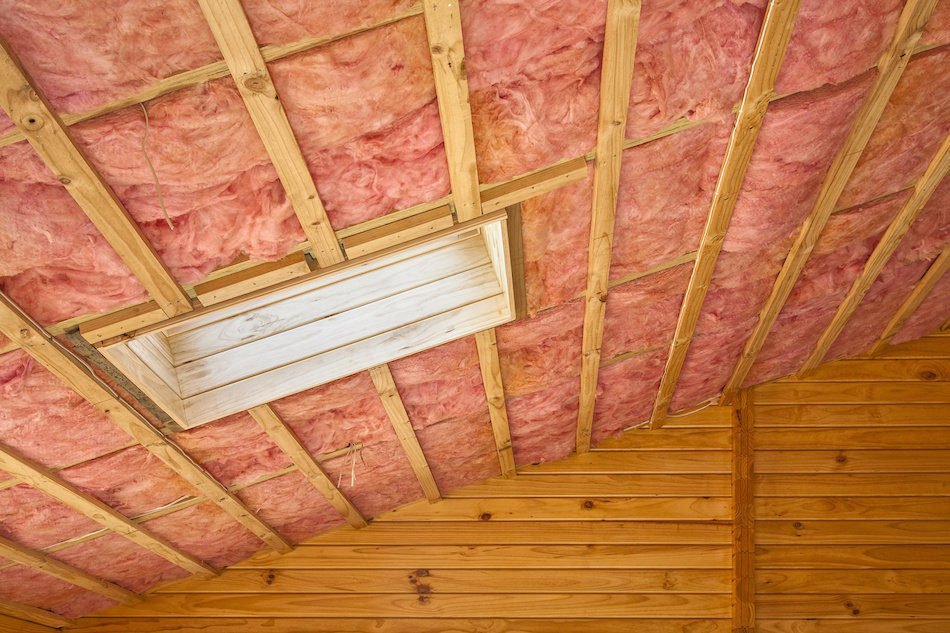How to Choose the Right Insulation for Your Home
Posted by Justin Havre on Friday, February 1st, 2019 at 10:09am.
 Finding the right insulation isn't just a smart move for responsible homeowners who want to cut down on their heating and cooling bills, it's also one of the best ways to increase the resale value of the home.
Finding the right insulation isn't just a smart move for responsible homeowners who want to cut down on their heating and cooling bills, it's also one of the best ways to increase the resale value of the home.
When it comes to choosing the right insulation for the home, owners need to find quality materials that can handle the constantly fluctuating temperatures. However, they also need to consider the ventilation of the home as too much insulation can potentially interfere with the airflow. Learn more about how to strike the right balance.
Get an Energy Audit
The first step for a homeowner is to order an energy audit to see where they may be losing warm or cool air from the home. Most homeowners will only get this done if they notice the cost of their utility bills going through the roof, but energy audits can be a good idea for every home because even newer models aren't always built with efficiency in mind. During an energy audit, the technician will tell homeowners how they can make their home more efficient, so they can focus on the problem areas only.
Understand the Installation Grades of Insulation
Insulation comes in a variety of grades that tell a homeowner how thick the insulation actually is. Numbers increase by levels of thickness. It's easiest to choose insulation based on the climate in which a homeowner lives rather than cost or brand name. So someone who lives in a mild climate may choose R-20 insulation for their basement, while someone in a cold climate may choose R-60 to create a rigid barrier between the outdoors and indoors. In general, people in cold climates will choose R-49 insulation while those in milder climates will typically choose R-38.
Types of Insulation
The most popular choice for home insulation is loose fill because it's relatively inexpensive without sacrificing its efficacy. This type of insulation is typically the type sprayed into an attic. Made from fiberglass or cellulose, the material has to be sprayed or blown into the home with the use of pneumatic equipment. However, loose fill may also be one of the more difficult types of insulation to install.
There are also insulation rolls or boards that are easier to install as they can be laid over the necessary areas without the help of equipment. Finally, there's spray foam insulation which is designed to fill in even the tiniest crevices of the home. This is an effective choice, even if the cost of spray foam may price some homeowners out of their budget.
The Best Types of Insulation to Consider for Your Homes
Insulation takes many forms. Installing different types of insulation around the house can help homeowners keep their house warm and efficient. Below are the different types of insulation.
- Attic insulation is usually found in the floor of the attic, between joists. Many attics are unfinished, so the insulation is exposed and easy to access. Attic insulation helps prevent air from leaking into the attic. Adequate attic insulation is important for reducing heating and cooling costs.
- Wall insulation helps keep rooms comfortable when temperatures outside become very cold or very hot. Wall insulation is especially important in parts of the country where the winters or summers are extreme.
- Pipe insulation is wrapped around pipes to protect them from very cold air outside. Pipe insulation prevents pipes from freezing and bursting in the winter.
- Window insulation is a common feature in modern windows. Double paned and triple paned glass is insulated, although some windows are better insulated than others. Air-filled windows do not have the superior insulating properties of gas-filled windows.
In addition to the various types of insulation described above, there are different types of wall and attic insulation to consider. Fiberglass batts are large blankets of insulation that can be unrolled to fit into the space between joists. Loose fill insulation is insulation that comes in little loose chunks. Spray-foam insulation is sprayed on to the walls or floors as needed.
If you're not sure which type of insulation is right for your home, talk to a contractor or an energy auditor.
Where to Install Home Insulation
Homeowners will normally seal the air bypasses as their first measure because its the best way to control the flow of air in the home. If bypasses are located in particularly hazardous areas, a homeowner is usually better off hiring a professional to take care of the job. From the bypasses, homeowners can tackle the rafters in the attic before the ceilings and walls. Some homeowners may need to work with additional tools such as sheet metal to form a durable blockage between the roof of the chimney and the brickwork of the home.
Insulation typically nets a high rate of return when it comes to a homeowner's Panorama Hills home resale value because it can save a new homeowner hundreds of dollars a year on their utility bills. The best way to choose insulation is to learn about the different grades, consult with a professional, and install materials that suit the unique needs of your home.
